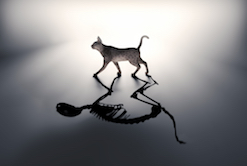Quantum physicists bring Schrödinger’s cat to life (and death)
Schrödinger’s famous feline thought experiment showed how tricky it is to apply quantum theory to real life. But photons behave differently to cats. Superposition means photons can be all things - in all states and places - at once. They don’t even obey the rules of cause and effect, where events follow each other in a certain causal order. Now, EU-funded physicists at the University of Vienna have found a new way to ‘watch’ this indefinite causal order, likening their experiment to a runner, Alice, simultaneously winning and losing a race. Philip Walther and his team working on the EQUAM (Emulators of Quantum Frustrated Magnetism) project believe that scrambling causal order will allow them to make leaps forward in computing and communications. Can I get a (causal) witness? The problem with superposition is that once you try to ‘see’ or measure it, it ceases to exist. Where a quantum particle used to be all things at once, it assumes a definite state. In short, if you open Schrödinger’s box, you collapse the experiment. So scientists trying to prove a lack of causal order have had to infer it from the success of an algorithm, rather than directly measure it. But the EQUAM team has found a third way. By using a theoretical mathematical concept known as a ‘causal witness’ - designed by Časlav Brukner’s group at the Austrian Academy of Sciences - Philip Walther and his team were able to show, for the first time, that a quantum process was not causally ordered. A meaningful step forward In their experiment, the scientists used an optical device to split a beam of light in two, and set about scrambling the order of the different paths it took. So as not to disturb the fragile process, they set up another quantum system to ‘raise a flag’ when the light passed by. The causal witness measured this additional quantum system, while keeping the superposition intact. The causal witness confirmed that the photons had passed through both quantum operations in two orders at the same time. In other words, they were able to ‘see’ Alice both win and lose the race, and measure the degree to which the two situations were superimposed. ‘Our experimental demonstration is a meaningful step forward in this area, since it demonstrates how to extract information inside these processes without disturbing their quantum nature,’ said Giulia Rubino, the lead author of the study. There are already a large number of studies about the role of causal relations, but the EQUAM project team has brought the theory to the laboratory. The group's next goal is to create superpositions of more complex processes to gain further insight into causal relations. For more information, please see: project page on CORDIS
Countries
Italy



